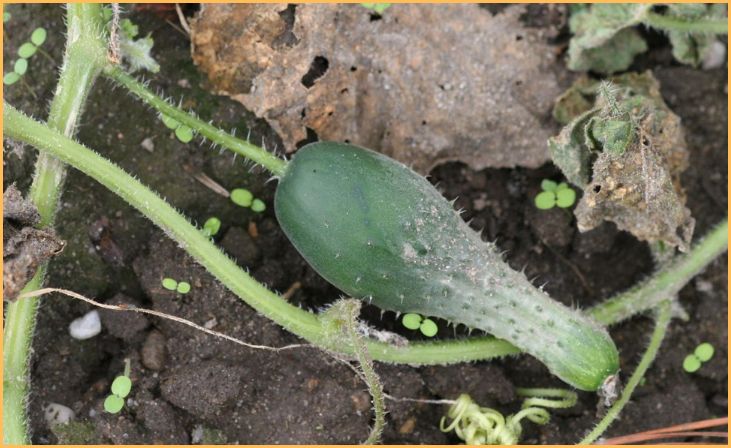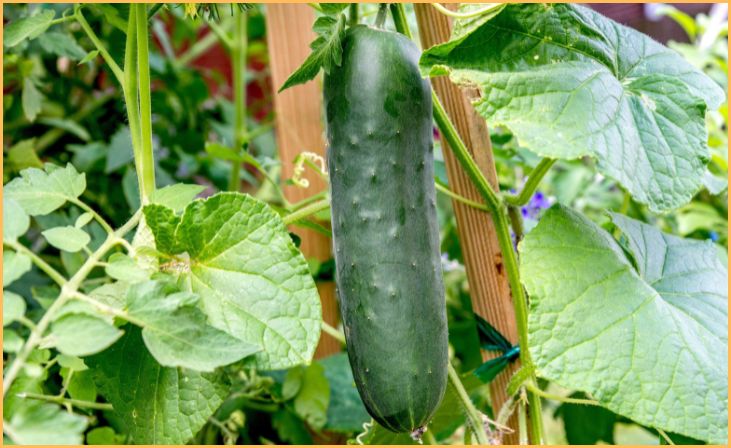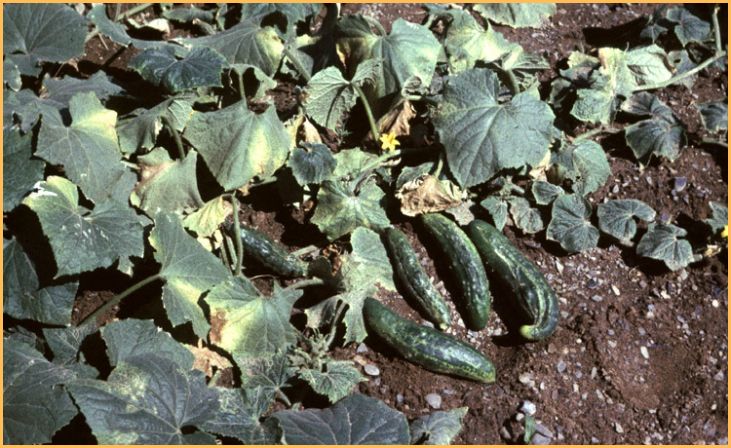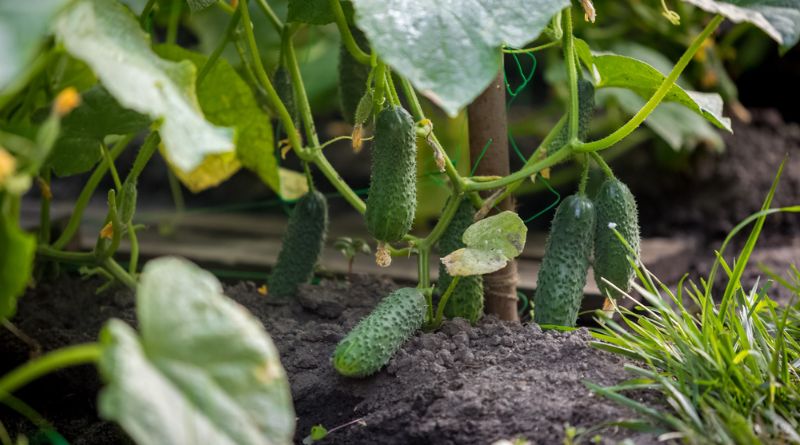Common Problems with Cucumber Plants – Cucumber plants (Cucumis sativus) are a popular and rewarding addition to many home gardens and commercial farms. Their crisp and refreshing fruits are not only delicious but also versatile in various culinary applications. However, growing healthy cucumber plants can be challenging due to a range of common problems that can hinder their growth and productivity.
Identifying and addressing these issues is crucial for a successful harvest. This outline aims to provide an organized overview of these problems and their potential solutions. By understanding the challenges cucumber plants may face, gardeners and farmers can take proactive measures to ensure robust growth, optimize yield, and enjoy the fruits of their labor.
Whether it’s dealing with pests, diseases, environmental stressors, nutrient deficiencies, or improper cultural practices, this outline will guide you through the key issues that can affect cucumber plants, helping you cultivate thriving cucumber crops.
Importance of identifying and addressing common problems
Identifying and addressing common problems in the cultivation of cucumber plants is of paramount importance for several reasons:
- Maximizing Yield: By recognizing and mitigating common issues, growers can optimize their cucumber crop yields. Healthy plants are more likely to produce a greater quantity of high-quality cucumbers, increasing overall productivity.
- Quality Control: Identifying and addressing problems early can help maintain the quality of the cucumber fruits. Blemished, diseased, or pest-damaged cucumbers are less marketable and less appealing for personal consumption.
- Cost Efficiency: Proactively addressing problems can reduce the need for expensive remedies or interventions. Preventing issues is often more cost-effective than attempting to rectify them after they have become severe.
- Sustainability: Sustainable agriculture practices emphasize minimizing the use of chemicals and resources. Addressing common problems through natural or less invasive methods aligns with these principles.
- Crop Health and Longevity: Unchecked problems can weaken cucumber plants and even lead to plant death. Identifying issues early and taking corrective measures can help ensure the long-term health and vitality of cucumber crops.
- Learning and Improvement: Understanding and addressing problems can be a valuable learning experience for growers. It allows them to adapt their cultivation methods, improve their skills, and make informed decisions in the future.
- Economic Viability: For commercial cucumber growers, addressing common problems is critical for economic viability. A successful crop can lead to higher profits, while repeated issues can lead to financial losses.
Also, Read – 10 of the World’s Deadliest Plants
Common Problems with Cucumber Plants
Pests

Pests like cucumber beetles, aphids, and spider mites can harm your cucumber plants by feeding on leaves, stems, and fruits. Regular monitoring is vital to detect them early. Employ natural predators, like ladybugs, or use organic or chemical control methods if needed. To prevent infestations, practice crop rotation and maintain good garden hygiene.
Powdery Mildew
Powdery mildew is a common fungal problem affecting cucumber plants, appearing as a white, powdery substance on leaves. It hinders photosynthesis and reduces fruit production.
To manage it, provide proper air circulation and avoid overhead watering. Use fungicides if necessary, and consider planting mildew-resistant cucumber varieties. Early detection is crucial to prevent the spread of the disease.
Downy Mildew
Downy mildew is a fungal disease that affects cucumber plants, typically in humid conditions. It manifests as yellow lesions on leaves, leading to reduced yields. Preventing and managing downy mildew involves spacing plants for good air circulation, practicing proper watering to keep foliage dry, and using fungicides if necessary.
Consider planting downy mildew-resistant cucumber varieties to reduce the risk. Early detection and regular inspection of your plants are key to effective control and minimizing the impact of this disease.
Blossom End Rot
Blossom end rot is a common issue in cucumbers, characterized by dark, sunken spots at the fruit’s blossom end. It’s typically caused by calcium deficiency or irregular watering, which disrupts calcium uptake. To prevent blossom end rot, maintain consistent and even watering, ensuring the soil remains consistently moist but not waterlogged.
Conduct a soil test to check calcium levels, and amend the soil with calcium-rich supplements if needed. Proper mulching can help regulate soil moisture. Early intervention can mitigate the problem, but affected fruits are often irreparable and should be removed to promote healthy growth.
Also, Read – Plants to Transform Your Garden
Fruit Bitterness

Bitterness in cucumbers can result from irregular watering, environmental stress, or excessive exposure to heat. Bitter compounds tend to concentrate in the fruit when the plant undergoes stress. To prevent bitter-tasting cucumbers, maintain consistent and adequate watering, especially during hot weather. Providing shade or using shade cloth can reduce heat stress.
Additionally, choose cucumber varieties bred for low bitterness. If bitterness occurs in mature fruits, it’s challenging to reverse, so it’s best to harvest cucumbers while they are still small and young, as they are less likely to develop a bitter taste. Proper care and attention to environmental factors can help ensure a milder, more palatable cucumber crop.
Inadequate Pollination
Inadequate pollination can lead to poor fruit development in cucumber plants. Cucumbers rely on pollinators like bees and other insects to transfer pollen between male and female flowers. To improve pollination, attract pollinators to your garden by planting nectar-rich flowers and avoiding the use of pesticides harmful to them.
You can also hand-pollinate cucumber flowers by gently transferring pollen with a small brush or by tapping the flowers to release pollen. Ensure a good balance of male and female flowers on your cucumber plants, and be mindful of weather conditions that may hinder pollinator activity. Adequate pollination is crucial for a bountiful cucumber harvest.
Overcrowding
Overcrowding occurs when cucumber plants are spaced too closely in the garden. It can lead to several problems, including poor air circulation, increased risk of disease spread, and competition for nutrients and sunlight. To prevent overcrowding, follow recommended spacing guidelines for your cucumber variety, usually about 12-24 inches apart in rows.
Proper spacing allows for better air circulation, reducing the risk of fungal diseases. Additionally, it ensures that each plant receives adequate sunlight and nutrients for healthy growth and abundant fruit production. When planning your garden, consider the mature size of cucumber plants and provide sufficient space to optimize their development and minimize overcrowding-related issues.
Yellowing Leaves
Yellowing leaves on cucumber plants can signal various issues. It might result from nutrient deficiencies, overwatering, or diseases. To address yellowing, conduct a soil test to check nutrient levels and adjust fertilization accordingly. Ensure consistent, well-drained soil moisture, as both overwatering and underwatering can lead to leaf yellowing.
Proper watering practices, such as watering at the base of the plants, can help. Additionally, inspect your cucumber plants for signs of pests and diseases, which can also cause leaf discoloration. Promptly treat any identified problems to prevent further damage. Monitoring plant health and addressing the underlying causes of yellowing leaves will help ensure a healthy cucumber crop.
Wilting
Wilting in cucumber plants can result from various factors, including inadequate watering, overwatering, or pest damage. To address wilting, first, assess soil moisture; ensure it’s consistently moist but not waterlogged. If the soil is dry, water the plants at their base to avoid wetting the foliage. Check for pest infestations, like cucumber beetles or aphids, which can damage the plants and cause wilting.
Manage pests with appropriate control methods. Additionally, extreme heat or transplant shock can also lead to wilting; provide shade during hot weather and take care when transplanting seedlings. Timely intervention and a focus on the underlying causes will help revive wilting cucumber plants.
Cucumber Mosaic Virus

Cucumber Mosaic Virus (CMV) is a viral disease that affects cucumber plants and other members of the Cucurbitaceae family. It causes mottled leaves, stunted growth, and poor fruit development. CMV is primarily transmitted by aphids, which feed on infected plants and then spread the virus to healthy ones. There is no cure for CMV once a plant is infected.
Prevention involves using disease-resistant cucumber varieties and implementing good garden hygiene practices to reduce aphid populations. Promptly remove and destroy infected plants to prevent further virus spread. By taking preventive measures and early detection, you can minimize the impact of Cucumber Mosaic Virus on your cucumber crop.
Conclusion
In conclusion, recognizing and effectively addressing common problems in cucumber cultivation is the key to reaping bountiful, healthy harvests. Whether you are a home gardener or a commercial farmer, this proactive approach not only maximizes yields but also promotes sustainability, reduces costs, and enhances the overall quality of cucumber crops.
By learning from challenges and adapting cultivation practices, growers can ensure the long-term success of their cucumber plants, fostering a thriving and rewarding experience.
FAQs
Common problems include pests like aphids and cucumber beetles, diseases such as powdery mildew and downy mildew, environmental stressors like water and temperature issues, nutrient deficiencies, and cultural practices.
Powdery mildew is a fungal disease that appears as white, powdery spots on cucumber leaves. It can inhibit photosynthesis and reduce plant vigor.
Practices such as crop rotation, using row covers, and applying neem oil or diatomaceous earth can help prevent cucumber beetle infestations.







